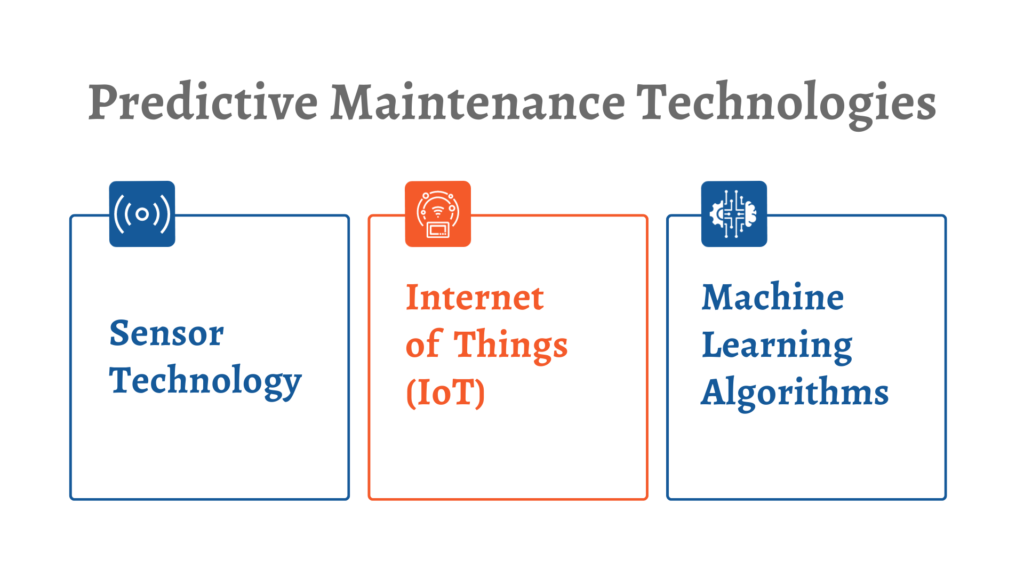Handyman Services List To Simplify Your Business Operations Serveiz |...
Read MoreWhat is Predictive Maintenance in Modern Industries
Serveiz | Blog
Predictive maintenance is a revolutionary approach that has transformed the way equipment and machinery are managed in various industries. It has revolutionized traditional maintenance practices and made them more effective. As a result of implementing cutting-edge technologies and data analytics, businesses can now predict when equipment failures are likely to occur and manage maintenance activities in advance as a result. As part of this comprehensive blog post, we will explore what is predictive maintenance, its suitability, users, advantages, disadvantages, challenges, and the technologies involved, from a comparison with preventive maintenance to its overall impact on the modern manufacturing industry.
What is Predictive Maintenance?
Predictive maintenance uses data analytics, sensors, and machine learning algorithms to predict potential equipment failures. By analyzing both historical data and real-time data from monitoring devices, businesses can forecast maintenance requirements. In this way, maintenance activities are performed precisely when necessary, reducing operational costs and downtime.
When is Predictive Maintenance Suitable?
The use of predictive maintenance is particularly suitable for industries where downtime can have a severe impact on profitability and operations. For manufacturing plants, transportation companies, energy providers, and utilities to keep their operations running smoothly, predictive maintenance is essential. This method is particularly effective for complex equipment and machinery where unplanned downtime can result in significant financial loss.
Who Uses Predictive Maintenance?
Maintenance managers, engineers, and data analysts are the primary users of predictive maintenance techniques. Their job is to analyze data collected from sensors and other sources to predict when maintenance will be needed. Manufacturing, factories, energy, logistics, city utilities, and construction rely on predictive maintenance for equipment reliability and efficiency.
Advantages of Predictive Maintenance
- Minimized Downtime: Predictive maintenance reduces unplanned downtime by identifying potential issues before they escalate, ensuring timely repairs and replacements.
- Cost Efficiency: By addressing problems proactively, businesses save on repair costs and prevent costly emergency breakdowns.
- Extended Equipment Lifespan: Regular, targeted maintenance activities extend the lifespan of machinery, maximizing return on investment.
- Improved Safety: Well-maintained equipment is safer for operators, reducing the risk of accidents and injuries in the workplace.
- Optimized Inventory: Predictive maintenance allows businesses to optimize spare parts inventory, ensuring the availability of necessary components without excessive stockpiling.
Disadvantages of Predictive Maintenance
- Initial Investment: Implementing predictive maintenance systems requires a significant initial investment in monitoring devices, software, and training, which can be a barrier for some businesses.
- Data Complexity: Managing and analyzing large volumes of data from monitoring devices and other sources can be challenging and require skilled personnel.
- False Alarms: Predictive systems may generate false alarms, leading to unnecessary maintenance activities and wasting time and resources.
- Dependency on Technology: Businesses relying heavily on technology for predictive maintenance are vulnerable to system failures or malfunctions, which could result in overlooking actual maintenance needs.
Overcoming Challenges in Predictive Maintenance
Addressing challenges in predictive maintenance requires a strategic approach. Businesses can overcome these challenges by:
- Investing in Training: Providing comprehensive training to employees to effectively use predictive maintenance tools and interpret data accurately.
- Improving Data Accuracy: Employing advanced analytics and machine learning algorithms to enhance data accuracy and reduce false positives/negatives.
- Regular System Updates: Ensuring that predictive maintenance systems are regularly updated to incorporate the latest advancements in technology and data analysis techniques.
- Collaboration and Knowledge Sharing: Encouraging collaboration between industry peers and sharing best practices to accelerate advancements in predictive maintenance strategies.
Predictive Maintenance Technologies

Predictive maintenance relies on several key technologies, including:
- Sensor Technology: Sensors collect real-time data on equipment performance, allowing businesses to monitor various parameters such as temperature, vibration, and pressure.
- Internet of Things (IoT): IoT devices enable seamless data exchange between equipment and systems, facilitating efficient communication and analysis.
- Machine Learning Algorithms: Advanced machine learning algorithms analyze historical and real-time data patterns to predict equipment failures accurately.
Predictive vs. Preventive Maintenance
While predictive maintenance focuses on predicting failures based on data analysis, preventive maintenance involves scheduled maintenance activities regardless of equipment condition. Predictive maintenance is more cost-effective and efficient as it avoids unnecessary maintenance tasks, unlike preventive maintenance, which often leads to over-maintenance and higher costs.
The Impact of Predictive Maintenance
Predictive maintenance has a transformative impact on modern industries, providing several benefits:
- Enhanced Operational Efficiency: Predictive maintenance ensures that equipment operates at peak efficiency, optimizing overall operational performance.
- Improved Customer Satisfaction: Reliable and consistent product or service delivery enhances customer satisfaction and loyalty.
- Reduced Environmental Impact: By optimizing equipment performance and reducing waste, predictive maintenance promotes sustainability and environmental responsibility.
- Competitive Advantage: Businesses implementing predictive maintenance gain a competitive edge by minimizing downtime, reducing costs, and meeting customer demand more efficiently.
Predictive Maintenance in Field Service Management:
Predictive maintenance uses AI-driven analytics to detect potential failures before they occur, allowing businesses to allocate resources more efficiently and avert downtime. It also helps businesses prioritize tasks, maximize resources, and create more efficient work orders. Here’s how predictive maintenance is transforming field service management
- Provides proactive issue resolution that minimizes downtime and ensures uninterrupted service.
- Increased productivity and reduced costs by optimizing field service teams and equipment deployment.
- Enhances customer satisfaction and fosters long-term relationships by ensuring consistent service delivery.
- Workplace safety is enhanced by predictive asset maintenance for a safe working environment.
- Provides cost-effective solutions, which result in significant cost savings.
- Supports long-term sustainability and growth by providing valuable insights on equipment upgrades, replacements, and investments.
Conclusion
Predictive maintenance is a game-changer for industries aiming for operational excellence and cost efficiency. By embracing advanced technologies and data-driven approaches, businesses can overcome challenges, minimize downtime, and stay ahead in today’s competitive landscape. As industries continue to evolve, predictive maintenance will play a pivotal role in shaping the future of efficient and sustainable operations.


